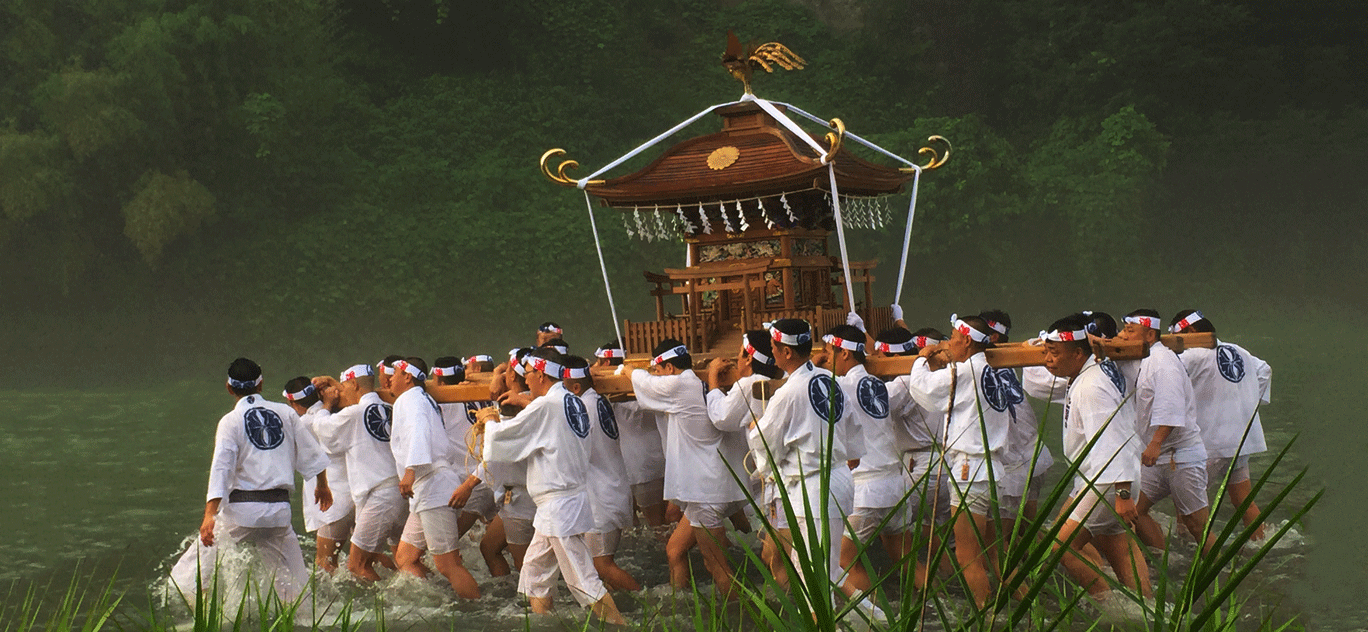Must-know words for Japanese summer festivals

June marks the beginning of the intensely hot and humid season in Japan. At the same time, and possibly to help cope with this weather, the entire country celebrates countless summer festivals or natsu matsuri (夏祭り) from June to August. These festivals are rooted in ancient Shintō beliefs and practices. However, in the last 70 years, natsu matsuri have become largely secular events and a great reason to go outside and enjoy the sights, sounds, rituals, and foods of the year’s liveliest and loudest season.
Here are some words and elements that make Japanese summer festivals extraordinary:
Matsuri/Kami
Usually translated as “festival,” the word matsuri (祭り) is derived from the verb matsuru (祭る) which means “to enshrine,” “worship,” or “celebrate the memory of.” Traditionally, the objects of enshrinement are heavenly or earthly individuals revered as kami (神), or spiritual beings. It’s a vague term for most, but in general terms, a kami is a Shintō or Buddhist spirit worthy of enshrinement, worship, or celebration. In the native cosmology, Japan is the Shinkoku Land of the Kami (神国) – usually translated as the Land of the Gods – because there are millions of kami everywhere. The tradition of matsuri grew out of ancient spiritual practices revering the tutelary kami of a local village or clan.
Mikoshi
Because kami are believed to be fickle or engaged in their own activities, getting their attention is of the utmost importance. During a matsuri, many Shintō shrines will transfer their kami to a portable shrine called mikoshi (御輿). The revelry of locals should be enough to attract the attention of the spirit, but just in case that’s not enough, the mikoshi is paraded through the streets of the neighborhood. The parishioners carry the portable shrine and shake it rhythmically while chanting and cheering to both entertain the kami as well as keep his or her attention.

Men carrying a mikoshi across a river. Image by Satomi Kuki
Dashi
During the Edo Period, the practice of building large decorative wagons or floats called dashi (山車) spread throughout the country. Some wagons feature huge depictions of historical personages and famous ancient kami. In Aomori’s Nebuta Matsuri, brilliant, illuminated scenes of Japanese mythology are paraded through the streets. At Hachiōji’s summer festival, the dashi wagons usually house musicians and dancers who work the crowd into a frenzy. To modern eyes, all of this is for the revelers, but historically, the purpose was getting the attention of the enshrined kami, worship, and celebration.
Bon Odori
Another prominent feature of matsuri in the late summer are Bon Odori (盆踊り), ritualized dance performances. These lively dances were performed during the O-bon season, when the spirits of a family’s ancestors returned home. However today, they are part of the overall sights and sounds of summer festivals. Each region has its own music and traditional garb, so the events tend to be visually and sonically intense.

Men and women dancing around the stage during bon odori. Image by Miki Yoshihito via Wikimedia Commons under CC.
Yukata/Geta
Lastly, one of the most fun parts of participating in a summer matsuri is dressing up in traditional clothes. The most popular garment is the yukata (浴衣), a light summer kimono. For men, it usually consists of a solid color with a simple contrasting belt called an obi (帯) . On the other hand, women’s yukata are often brightly colored with summer-themed prints like flowers and fireworks, and their obi are wider and sport large, decorative bows tied around their backs. These outfits can be completed with a pair of geta (下駄), a kind of traditional wooden shoe that makes a clip-clop sound when walking on pavement, which just adds to all the other noise and excitement of a Japanese summer festival.
Do you celebrate summer festivals in your country? If yes, we’d love to see some photos and hear about them below!
Main image by Kaztima109 via Wikimedia Commons under CC


